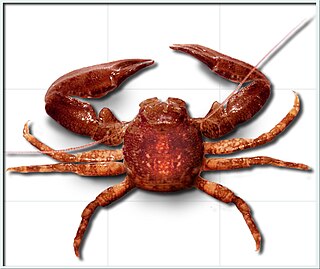Related Research Articles

Rastafari, also known as Rastafarianism and the Rastafari Movement, is a religion that developed in Jamaica during the 1930s. It is classified as both a new religious movement and a social movement by scholars of religion. There is no central authority in control of the movement and much diversity exists among practitioners, who are known as Rastafari, Rastafarians, or Rastas.

Paratrechina is one of seven ant genera in the Prenolepis genus-group from the subfamily Formicinae. Six species are included in Paratrechina; one of which, the longhorn crazy ant, is a widespread, pantropical pest.

The Luzon scops owl is an owl endemic to Luzon, Philippines. There are no subspecies.
Ephysteris is a genus of the twirler moth family (Gelechiidae). Among these, it is assigned to tribe Gnorimoschemini of the subfamily Gelechiinae. Even though it is a rather diverse and widespread group, most of these small and inconspicuous moths were overlooked by scientists until the early 20th century. Almost 90 species are known today, but new ones are still being discovered.

Sir Arthur Charles Clarke was an English science-fiction writer, science writer, futurist, inventor, undersea explorer, and television series host.
Siphonochelus is a genus of sea snails, marine gastropod mollusks in the family Muricidae, the murex snails or rock snails.

Pisidia longicornis, the long-clawed porcelain crab, is a species of porcelain crab that lives in the north-eastern Atlantic Ocean. It varies from reddish to white, and grows to a carapace width of 1 cm (0.4 in). It was first named by Carl Linnaeus in 1767, although the etymology remains unclear.
Ephysteris subdiminutella is a moth of the family Gelechiidae. It is a widely distributed species, it is known from northern and southern Africa, from Egypt to South Africa, Australia, Palestine, India, Pakistan and Afghanistan. It is also found in the Galápagos Islands.
Ephysteris iberica is a moth of the family Gelechiidae. It was described by Povolný in 1977. It is found in Croatia, Greece, France, Spain and on Sicily and Malta. Outside of Europe, it has been recorded from Israel.

Gelechiinae is a subfamily of moths in the family Gelechiidae. It was described by Henry Tibbats Stainton in 1854.
Ephysteris sirota is a moth in the family Gelechiidae. It was described by Edward Meyrick in 1908. It is found in the South Africa provinces of Gauteng, KwaZulu-Natal and Limpopo.
Ephysteris subcaerulea is a moth in the family Gelechiidae. It was described by Edward Meyrick in 1918. It is found in southern India.
Ephysteris insulella is a moth in the family Gelechiidae. It was described by Hermann von Heinemann in 1870. It is found in France, Germany, Switzerland, Italy, Bulgaria, Romania and Russia. Outside of Europe, it is found in south-eastern Kazakhstan, southern Siberia, Mongolia and China.
Ephysteris inustella is a moth in the family Gelechiidae. It was described by Philipp Christoph Zeller in 1839. It is found in Portugal, Spain, France, Germany, Italy, Austria, the Czech Republic, Slovakia, Poland, Hungary, Bosnia and Herzegovina, the Baltic region, Ukraine and Russia.
Ephysteris brachyptera is a moth in the family Gelechiidae. It was described by Ole Karsholt and Klaus Siegfried Oskar Sattler in 1998. It is found on Madeira, in the north Atlantic Ocean, southwest of Portugal.
Ephysteris neosirota is a moth in the family Gelechiidae. It was described by Anthonie Johannes Theodorus Janse in 1950. It is found in Namibia.
Ephysteris ornata is a moth in the family Gelechiidae. It was described by Anthonie Johannes Theodorus Janse in 1950. It is found in Namibia and the South African province of Gauteng.
Ephysteris trinota is a moth in the family Gelechiidae. It was described by Clarke in 1965. It is found on the Galapagos Islands.
Ephysteris pentamacula is a moth in the family Gelechiidae. It was described by Anthonie Johannes Theodorus Janse in 1958. It is found in Namibia and South Africa.
References
- ↑ Savela, Markku. "Ephysteris longicornis Clarke, 1986". Lepidoptera and Some Other Life Forms. Retrieved August 12, 2019.
| This article on a moth of the tribe Gnorimoschemini is a stub. You can help Wikipedia by expanding it. |